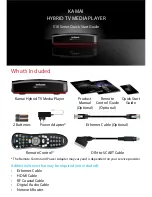
-
17
-
VM-5011A Instruction Manuals
(TVE-6-4188E / Version 1.20)
12. About Envelope Acceleration (E acceleration)
If the inner ring of a rolling bearing is scratched, vibration with an impact (several kHz or
more) will occur each time the rolling element passes through the scratch (Fig.12-1).
Fig.12-1 Example of impact waveform when bearing is abnormal
By processing the impact waveform by absolute value and passing it through a low-pass
filter, the envelope curve corresponding to the thick line in Fig.12-2 is obtained. By frequency
analysis of the obtained envelope, the repetition period (frequency) of impact can be obtained.
In addition, the waveform with impact also includes the primary rotation component and
low-frequency vibration component, and these components become noise in the envelope
processing, so they are removed in advance using a bandpass filter.
This product uses a bandpass filter of 500Hz to 10kHz before envelope processing, removes
primary rotation components and low frequency components, performs envelope processing,
and outputs the enveloped waveform as "E acceleration AC output". (See Figure 12-3).
Since the impact repetition frequency differs depending on which part of the bearing is
damaged, precise diagnosis is possible by frequency analysis using the E-acceleration AC
output.
In addition, the waveform after envelope processing is converted to 4-20mA or 0-10V
and output as a vibration level, so early detection of bearing abnormalities can be expected
by managing the vibration level.
Fig.12-3 Block Diagram of E acceleration
Repetition period
Fig.12-2
Envelope processing
Bandpass
Filter
500 to10kHz
Vibration
Waveform
Absolute
Value
Conversion
High Pass
Filter
10Hz
Low Pass
Filter
1kHz
Range
Setting
RMS-DC
Conversion
Buffer
4-20mA
Output
0-10V
Output
E Acc.
AC Output
E Acc.
DC Output






































